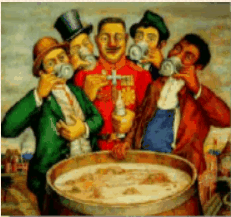 HISTORY OF TEQUILA
HISTORY OF TEQUILA
BY CAROL DUFF STAFF WRITER/Editor
Tequila is an alcoholic drink made from the fermented and distilled sap of the agave (maguey) which is an indigenous plant to Mexico, and is more specifically called agave tequilana Weber, blue variety. The agave is a succulent, not a cactus. Agave may have been cultivated for as long as 9,000 years and mainly grows in the highlands of central Mexico, in the Jalisco state.![mexicanman_1[1]](https://www.veteranstodayarchives.com/wp-content/uploads/2010/11/mexicanman_11.gif)
This high plateau area averages 7,500 feet above sea level and has sandy, mineral-rich red soil on the plateau and black earth in the valleys. Tequila is North America’s first distilled drink, and also its first commercially-produced alcohol.
[youtube jd9XD5Dj2d8&feature=fvw]
The Conquistadors distilled a much stronger drink called pulque which was a much heartier spirit than the tequila of today. In the 400 years since the Conquest, tequila had become an icon of Mexican pride, culture and nationality. Today, most tequila is produced in the state of Jalisco, around the town of Tequila.
Human remains, that date back 9,000 years, offer evidence that the agave was used for food and fiber. Distillation of pulque, the distant ancestor of tequila, into something stronger, may have started with the Conquistadors as early at the 1520s. They exported it into the Old World. The Spanish were accustomed to consuming alcoholic beverages with food and knew it was safer to drink these beverages, as water was unpurified and full of bacteria and parasites. The first tequila factory was established by Don Pedro Sanches de Tagle, Marquis of Altamira, in 1600, as he cultivated the local agave for distillation.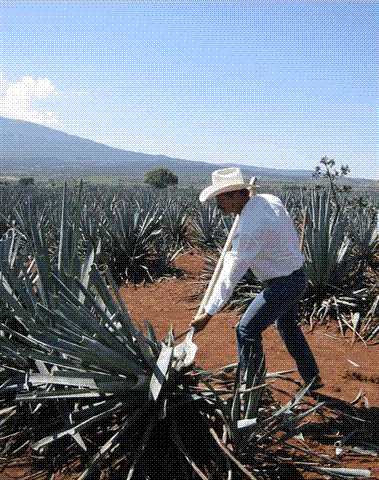
![fiesta3_1[1]](https://www.veteranstodayarchives.com/wp-content/uploads/2010/11/fiesta3_11.gif) By 1621 “wines of the mescal” were being shipped to Guadalajara. In 1636, governor Don Juan Canseco y Quinones authorized the distillation and production of mescal wines because this made it easier to collect taxes on its production. After the Conquest, the area around what is now Jalisco state, was originally called New Galicia by the Spanish conquerors. The community that is now Tequila became an official village in 1656.
By 1621 “wines of the mescal” were being shipped to Guadalajara. In 1636, governor Don Juan Canseco y Quinones authorized the distillation and production of mescal wines because this made it easier to collect taxes on its production. After the Conquest, the area around what is now Jalisco state, was originally called New Galicia by the Spanish conquerors. The community that is now Tequila became an official village in 1656.
Until 1821,Jalisco was under a separate government from Mexico. In the 1700s mescal wines became an important export product because Tequila was on the route to the newly opened Pacific port of San Blas. Mezcal wines developed a reputation for quality, even in the urban setting of Mexico City. In 1785 there was a ban placed on the production of spirits by Charles III, to promote the importation of Spanish wines and liquors.
[youtube uU8urYBd-3w&feature=related]
Production of spirits went underground until 1792 or 1795 when King Ferdinand IV ascended the throne and lifted the ban. It is thought that the prohibition may have been what caused the baking of agave underground. The tequila producing areas of Mexico are in Jalisco and lie on the east-west line that begins at Jesus Maria and passes though Guadalajara, and reaches to Escobedo in the west.
The two main areas of production are around the town of Tequila and lie in the highlands near Atotonilco and Los Altos. Before tequila took its name from the town, it was called mezcal or mezcal wine. The agaves were originally harvested in only three small valleys, Armatitian, Arenal, and Tequila. Now the region covers over 100,000 acres with 1,000 to ![flamen2_1[1]](https://www.veteranstodayarchives.com/wp-content/uploads/2010/11/flamen2_11.gif)
![dance18_1[1]](https://www.veteranstodayarchives.com/wp-content/uploads/2010/11/dance18_11.gif) 2,000 plants per acre. More than 50 million gallons of tequila are produced annually with 40 percent being exported.
2,000 plants per acre. More than 50 million gallons of tequila are produced annually with 40 percent being exported.
While most liquers come from distilled grain tequila is distilled from the roasted center (pina) of the blue agave plant which if one of 136 species of agave that grow in Mexico. The plant has a life span of 8 to 14 years, depending on the climate, soil, and cultivation methods.
The agave belongs to the lily family, not the cactus family and grows best at 1,500 meters. Some think that the best agave grows on the slopes of the extinct volcano that lies near the town, and others think the best tequila is made from the agave taken from the highlands to the east because that is where agave tends to grow larger.
It takes at least eight years for the agave to reach the stage where it is suitable for fermentation. It may be left to grow for 12 years before harvesting, because the more mature the plant, the better the natural sugars. Experimentation with irrigation proved that the larger plants do not necessarily produce more agave sugars. The part of the agave plant that is used to make tequila is the heart (pina) also called the head or cabeza. This looks like a large pine cone or pineapple. The plant starts to grow underground then pushes to the surface to reach light. The mature pina usually weighs 80 to 300 pounds although most specimens are under 200 pounds.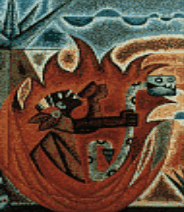
If the agave is left to grow wild it will extend a shoot that can be 15 or more feet tall. The pale yellow flowers at the top are pollinated by long-nosed bats (Leptonycteris nivalis) and then the plant will die after producing 3,000 to 5,000 seeds. The carbohydrate-rich pina is cut from its stalk and separated from its leaves. Harvesting is done year round because the plants mature at different stages while in the fields. Some distillers will pre-cook the pinas which helps to rid them of external materials. It takes 7 kilograms of pina to produce one liter of 100 percent agave tequila. Smaller producers may just purchase the agave juice and avoid the preparation of the pina.
The traditional distillers (tequilleros) allow the pinas to soften in steam rooms or slow-bake in ovens for 50- 72 hours. The traditional brick or stone oven is called a horno and these are used to bake or roast the pinas at about 140-185 degrees F. The process of slow baking keeps the agave from carmelizing which gives bitter flavor to the juice and causes it to darken. The larger distillers cook their pinas in steam autoclaves and pressure cookers in a little as 8-14 hours. During the baking process the complex carbohydrates are turned into fermentable sugars and this causes the pinas to release their juice. After cooling, the pinas are smashed to separate the pulp from the juice, but some traditional distillers keep the two together during the fermentation process. Modern distillers use a mechanical crusher or shredder to process out the waste which is usually given away as animal food and fertilizer.
The more traditional producers may still use a giant grinding wheel operated by mules, horses, oxen, or more likely today, a tractor. The pinas are minced and strained to remove the juices (aquamiel, or honey water), then mixed with water in vats. This wort is sprinkled with yeast which is traditionally a yeast that grows naturally on the leaves of the plant, but today is more usually cultivated from wild yeast, or commercial brewer’s yeast. The must is then left to ferment in stainless steel or wooden tanks. This process can take 7 to 12 days, but modern plants will add chemicals to accelerate the yeast growth so this process may take only two to three days.
The longer the fermentation process, the more robust will be the body of the tequila. Often the fermented must will be used as a starter mixture for the subsequent batch. Sometimes the must is fermented with the residual pulp left in and this wil![tequila_1[1]](https://www.veteranstodayarchives.com/wp-content/uploads/2010/11/tequila_11.gif) l give more flavor to the liquid. If the pulp is not used in this process it can be sold to make bricks or as a packing material. Some manufacturers use brown or cane sugar, which accelerates the fermentation, so that fewer or immature plants may be used. This is usually the type of tequila that is sold in bulk for shipping out of the country and can be bottled anywhere including other countries where regulation regarding agave content are not necessarily maintained. These tequilas are mixto and will not be labeled 100 percent agave. After fermentation is finished the must is allowed another 12 hours to settle and become richer before the distillation process.
l give more flavor to the liquid. If the pulp is not used in this process it can be sold to make bricks or as a packing material. Some manufacturers use brown or cane sugar, which accelerates the fermentation, so that fewer or immature plants may be used. This is usually the type of tequila that is sold in bulk for shipping out of the country and can be bottled anywhere including other countries where regulation regarding agave content are not necessarily maintained. These tequilas are mixto and will not be labeled 100 percent agave. After fermentation is finished the must is allowed another 12 hours to settle and become richer before the distillation process.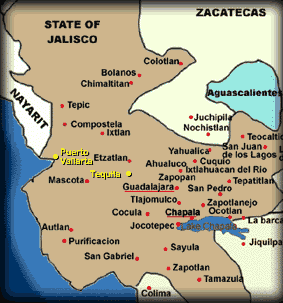
The fermentation gives a liquid that is between 5 and 7 percent alcohol. This is then distilled twice in the traditional copper pot stills, called alambiques, or in the modern stainless steel column stills. The first distillation takes one and one half to two hours and is called orinario and produces about 20 percent alcohol. The second distillation takes three to four hours and results in a liquor of about 55 percent alcohol. These distillations have three parts: the head which has more alcohol and the unwanted aldehydes and is discarded. The middle section, or the heart, is the best part and is saved for production. The end or tails is sometime recycled into the next distillation to make it more vigorous. The residue is discarded. After distillation the tequila is clear, but the color comes later after the aging in wooden barrels or from the additives like caramel or essence of wood.
Before the bottling, most tequila is filtered through cellulose filters or activated carbon. Most distillers add de-mineralized water to bring the proof down to 80 or 40 percent alcohol. Some traditional distillers will stop the process at the required proof. Resposado and anejo tequilas are stored in oak casks. Bourbon barrels are the most prized but some distillers use sherry, whiskey, cognac, and even new barrels. The older barrels may be 50 years old or older. These barrels will be stored in warehouses or bodegas. Blanco remains in stainless steel tanks until bottling or may be bottled immediately after distillation. The color of the tequila does not necessarily reflect either the quality or the age. The final product is usually blended with other barrels of a similar age which creates a consistency of aroma and taste.
![fiesa3_1[1]](https://www.veteranstodayarchives.com/wp-content/uploads/2010/11/fiesa3_11.gif) The Tequila Regulatory Council oversees the production to make sure that the distillers meet the standards of quality controls that have been put into place by the Mexican legislature. The resulting liquid is then bottled or tanked for bulk shipments. Some single barrel tequilas are available in the premium market. All 100 percent agave tequilas must be bottled in Mexico and marked “Hecho en Mexico.” Only mixto tequila is allowed to be sold in bulk and bottled outside the country. TYPES OF TEQUILA There are four types of tequila. Blanco or plate (white or silver) is the most common type. This type is considered unaged and is less than 60 days old and may be bottled directly from distillation. If it is marked 100 percent agave, this type may be more robust and tastier than highly refined varieties.
The Tequila Regulatory Council oversees the production to make sure that the distillers meet the standards of quality controls that have been put into place by the Mexican legislature. The resulting liquid is then bottled or tanked for bulk shipments. Some single barrel tequilas are available in the premium market. All 100 percent agave tequilas must be bottled in Mexico and marked “Hecho en Mexico.” Only mixto tequila is allowed to be sold in bulk and bottled outside the country. TYPES OF TEQUILA There are four types of tequila. Blanco or plate (white or silver) is the most common type. This type is considered unaged and is less than 60 days old and may be bottled directly from distillation. If it is marked 100 percent agave, this type may be more robust and tastier than highly refined varieties.
Some distillers will place blanco tequilas in oak barrels for a greater smoothness, but the maximum period for this is 30 days. The second type is joven abocado (young and smooth and also called gold, or oro. Basically this is the same as blanco but has coloring and flavoring added to make it look aged. This is known as mixto, or mixed blends. These are usually not as good as 100 percent agave, but have become popular for export sales. Respodado means rested and is aged from two months to a year in oak casks or barrels. This is the level at which the better tequilas start, as the taste becomes richer and more complex. The color deepens the longer the liquor is aged because the wood affects the flavor. This type accounts for more than 60 percent of all tequila sales in Mexico and was the first type of aged tequila. Anejo is aged or vintage and is aged in government-sealed barrels of no more than 350 liters for a minimum of one year.![tequila_1[1]](https://www.veteranstodayarchives.com/wp-content/uploads/2010/11/tequila_111.gif)
![fiesta3_1[1]](https://www.veteranstodayarchives.com/wp-content/uploads/2010/11/fiesta3_111.gif)
![tequila_1[1]](https://www.veteranstodayarchives.com/wp-content/uploads/2010/11/tequila_112.gif)
Anejo may be aged as long as 8 to 10 years, although many say that tequila is at its best at four or five years of age. It is usually removed from the barrels and placed into stainless steel tanks after four years because evaporation from the barrels reaches 50 percent or more. Often the anejos become quite dark due to the influence of the wood. Reserva de casa is not officially recognized as a type but usually means premium and may be a limited production variety. . MESCALS Tequila is a type of mescal, but mescals are not tequilas. Both are derived from the plant known as mexcalmeti, they are as different as cognac and brandy. Tequila is double distilled with a few brands opting for a third distillation. Tequila is made by “tequileros” and the Maguey growers are known as ‘maqueros.” The sugar-rich heart of the agave, or tequila pina, is baked or steamed in above ground ovens or autoclaves. The manufacture of tequila is closely controlled by the Tequila regulatory Council and the Mexican government. Information placed on the bottle about style, age, and content have legal requirements.
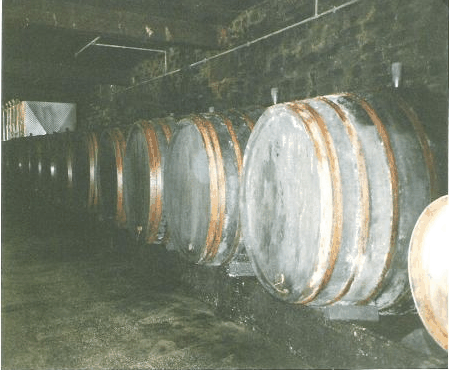 There is also a non-profit council, the Chamber of Tequila Producers, which regulates the industry. Tequilas vary according to the company, their manufacturing process, and the growing environment. The soil, temperature, types of equipment, age of plants and the means by which the plants are baked and aged all affect the tequila. All of these factors affect the body and flavor of the individual tequila. There can be a large variation in tequila flavors, especially between styles like the anejo, reposado, and blanco. In general the more traditional methods produce the stronger agave flavor than the modern, mass production.
There is also a non-profit council, the Chamber of Tequila Producers, which regulates the industry. Tequilas vary according to the company, their manufacturing process, and the growing environment. The soil, temperature, types of equipment, age of plants and the means by which the plants are baked and aged all affect the tequila. All of these factors affect the body and flavor of the individual tequila. There can be a large variation in tequila flavors, especially between styles like the anejo, reposado, and blanco. In general the more traditional methods produce the stronger agave flavor than the modern, mass production.
Ageing in barrels also affects the taste, but not always for the betterment of the product, because the woody flavor from the oak can overpower the natural agave. As mentioned earlier, some manufacturers are adding the essence of wood to darken the tequila so that it looks more aged. Ultimately, taste is the deciding factor as to which tequila to choose. The young blanco tequilas have a rougher edge with a more distinct agave flavor, while the reposado has a sharper, peppery taste, and the anejo offers the woody smooth aroma. Are you looking for a worm in the bottle? There is no worm in Mexican bottled tequila, although you can find some in the American-bottled brands which is supposed to impress and boost sales. This is purely a marketing play and not a Mexican tradition.
![mexicanman_1[1]](https://www.veteranstodayarchives.com/wp-content/uploads/2010/11/mexicanman_111.gif) If you do find a worm, it is the gusano or butterfly caterpillar (Hipopta Agavis) and you will be looking at a bottle of Mezcal. Sometimes there is a small bag of “worm salt” or dried gusano, salt, and chile powder that is tied to the mezcal bottle. The worm appeared in the 40s as a marketing ploy to get more attention for mescal, which can be made from five different varieties of agave, mostly the espadin. Mezcals are generally distilled only once with premium blends being distilled twice.
If you do find a worm, it is the gusano or butterfly caterpillar (Hipopta Agavis) and you will be looking at a bottle of Mezcal. Sometimes there is a small bag of “worm salt” or dried gusano, salt, and chile powder that is tied to the mezcal bottle. The worm appeared in the 40s as a marketing ploy to get more attention for mescal, which can be made from five different varieties of agave, mostly the espadin. Mezcals are generally distilled only once with premium blends being distilled twice.
Mezcal is made by “palenqueros.” To make mescal the sugar- rich heart of the agave, mescal pinas, are baked in a cylindrical, rock-lines pit over (palenque) over charcoal and then covered with layers of mats made of palm fibers and earth which gives the mescal its strong smoky flavor.
WHERE IS THE WORM?
[youtube G43Fxahagvw]
copyright Carol Duff, Bernkastel Vintner Consultants 2005

Carol graduated from Riverside White Cross School of Nursing in Columbus, Ohio and received her diploma as a registered nurse. She attended Bowling Green State University where she received a Bachelor of Arts Degree in History and Literature. She attended the University of Toledo, College of Nursing, and received a Master’s of Nursing Science Degree as an Educator.
She has traveled extensively, is a photographer, and writes on medical issues. Carol has three children RJ, Katherine, and Stephen – one daughter-in-law; Katie – two granddaughters; Isabella Marianna and Zoe Olivia – and one grandson, Alexander Paul. She also shares her life with her husband Gordon Duff, many cats, and two rescues.
ATTENTION READERS
We See The World From All Sides and Want YOU To Be Fully InformedIn fact, intentional disinformation is a disgraceful scourge in media today. So to assuage any possible errant incorrect information posted herein, we strongly encourage you to seek corroboration from other non-VT sources before forming an educated opinion.
About VT - Policies & Disclosures - Comment Policy



